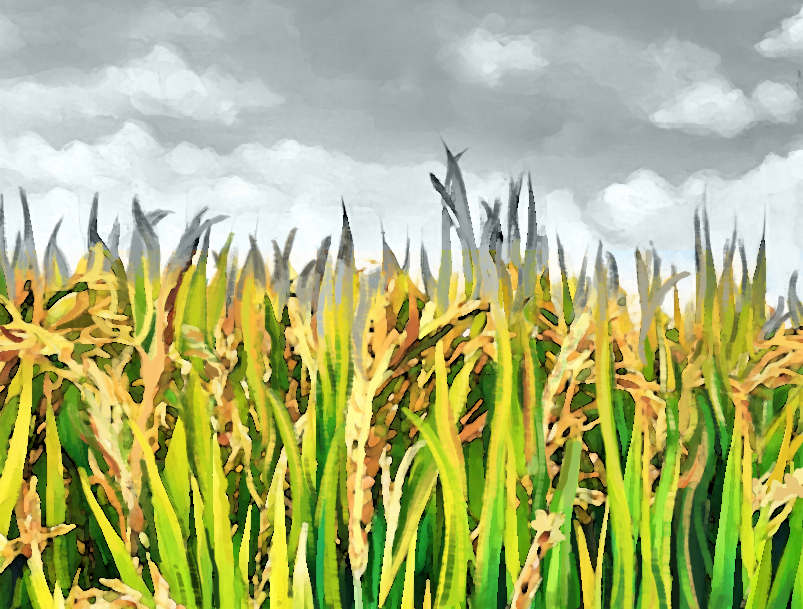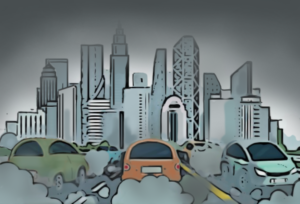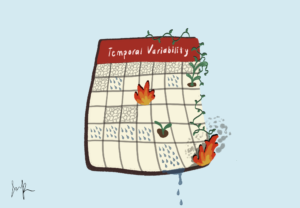
Seafood Paella from Spain, Gallo Pinto from Costa Rica, Avgolemono soup from Greece, and Zhongzi from China all have one thing in common—rice. As a staple for 3.5 billion people worldwide, rice is the most consumed food globally and essential to diets dating back to 2500 B.C.
Rice cultivation began in China and surrounding areas, later spreading throughout India, the Mediterranean, and other parts of the world. Initially, rice was planted in marshy areas near rivers. Over time, rice paddies became common, where rice is planted in standing water, absorbing it throughout the growing period, with fields drained before harvesting.
In modern times, nitrogen is the most limiting nutrient for successful rice fields, essential for rapid plant growth, grain yield, and quality. To produce high-quality rice, nitrogen fertilizer is often applied to flooded rice paddies.
However, rice plants’ overuse of nitrogen and poor absorption contribute to two major pollutants: methane (CH₄) and nitrous oxide (N₂O). Rice cultivation accounts for 12% of global methane emissions, a greenhouse gas 28 times more potent than carbon dioxide. As a result, rice production is responsible for 1.5% of global greenhouse gas emissions. Moreover, rice is a thirsty crop, consuming nearly 30% of the world’s freshwater. It requires consistent irrigation throughout the season, with 4 to 5 thousand liters of water needed to produce just one kilogram of rice.
Between methane emissions and water use, continuing these historical methods of rice cultivation is detrimental to our already fragile environment.
Various methods have been employed to reduce emissions from rice production, both technological and policy-driven.
Genetic engineering, aerobic systems, and alternative planting patterns have been developed to mitigate the impact. One notable method is alternate wetting and drying, which reduces methane emissions by allowing water in rice fields to evaporate mid-season before reflooding. This practice also saves 30% of water usage but increases nitrous oxide emissions by 20%. Other innovations, like agricultural plastic films and dryland rice production, offer environmental benefits but often reduce crop yields, making farmers hesitant to adopt them.
While these technological methods show promise, comprehensive policy shifts may be crucial in significantly reducing the environmental impact of rice production. Carbon credits for “smart rice” practices have been implemented, such as the USDA’s $22.6 million investment in conservation innovation grants in 2017 to support rice farmers adopting methane reduction practices. More recently, a $7.5 million rice project was funded in September 2022. Incentivizing farmers to embrace these practices will ultimately help in mitigating the impact on our atmosphere.
As the primary source of energy for half the world’s population, rice is irreplaceable. Yet, it’s clear that our approach to rice cultivation must evolve. By combining innovative technologies with forward-thinking policies, we can sustain this essential crop while protecting our planet for future generations.
Works Cited
Calma, Justine. “The food we eat is destroying the climate — here’s how to fix it.” The Verge, 6 March 2023, https://www.theverge.com/23626387/food-diet-beef-dairy-rice-agriculture-climate-change-solutions. Accessed 28 August 2024.
“Cultivating US and Chinese Climate Leadership on Food and Agriculture: A Roadmap for Collaboration.” Wilson Center, https://www.wilsoncenter.org/publication/cultivating-us-and-chinese-climate-leadership-food-and-agriculture-roadmap. Accessed 28 August 2024.
“How Can We Incentivize Reducing Methane Emission in Rice Farming in Asia?” Asian Development Bank, 18 October 2023, https://www.adb.org/news/events/how-can-we-incentivize-reducing-methane-emission-rice-farming-asia. Accessed 28 August 2024.
“International Rice Dishes From Around the World.” Mahatma® Rice, https://mahatmarice.com/cooking/rice-dishes-from-around-the-world/. Accessed 28 August 2024.
“Rice: History.” PLB Lab Websites, https://labs.plb.ucdavis.edu/rost/rice/introduction/intro.html. Accessed 28 August 2024.
Williams, Jeremy. “The climate impact of rice – The Earthbound Report.” The Earthbound Report, 14 March 2023, https://earthbound.report/2023/03/14/the-climate-impact-of-rice/. Accessed 28 August 2024.
The views and opinions expressed are those of the authors and do not necessarily reflect nor represent the Earth Chronicles and its editorial board.









